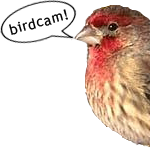Over the past couple of years I have found myself perusing and eventually following a number of local/regional/national blogs and sites on stuff that I find interesting – cooking, baseball, model sailplanes, cycling, what-have-you. The best ones are ones backed by interesting people with interesting things to say – at least interesting to me, and that’s what’s important to me. This blog-reading/stalking stuff is very personal.
Some blogs do everything “right”, meaning they’ve optimized their site and content for a wide range of viewers – friends or strangers, people new to the site, old hands, people new to the subject they are writing on and people well-acquainted, and people reading it via their primary domain or via the rising trend of RSS readers.
But MOST blogs could use some sort of tweaking to keep their readership, whomever they are, engaged and growing. And that’s where I’ll come in, with this very article you are reading.
After the jump:
- Say Hello and Show Your Face
- Don’t Assume I Know What You Are Talking About
- Google Reader, RSS and publishing your FULL entries
- Don’t Get Crazy with your Blog Template
Say Hello and Show Your Face
If you are running a blog that is super-secret and filled with scandalous juicy tidbits, or divulging intimately personal information on the Internet (don’t do that), then DON’T take the following advice: Put a photo of yourself or your co-bloggers and brief capsule of who you are and why you are writing this blog on your blog. Secondly, use your real name – even if it’s just your first name. You don’t have to give away the store, just give some details that will connect your readers to YOU, which is why they are reading your stupid blog in the first place.
These things are especially crucial if you are writing a locally-focused blog and chances are you will run into one of your devoted readers on the street, in the park or at the grocery. Otherwise, you’ll be ships passing in the night. Ships that are constantly scanning the crowd wondering Is that the girl that writes that blog I love? Man, I’m just not sure. Oh well, I guess I’ll go home and play Bejeweled. While the Internet is a lovely place to be alone, the world itself is not.
Don’t Assume I Know What You Are Talking About
New visitors to your site don’t know a hoot about you, and they don’t know about your past, in-jokes, lingo, friends or possibly even the subject matter of which you speak. This, however, isn’t a problem thanks to the much ballyhooed “hyperlink“. The hyperlink states “there is more information about the word or words I contain, if you just click on me”. This provides a couple of advantages:
- You don’t have to explain the topic right there in the article, leading to brevity and focus
- You can educate your reader (if they want)
- If the user is interested, they don’t have to Google whatever the heck you are talking about.
For example: “Man, I totally had a bitchin’ time flying handlaunched gliders with my friend Chris Lee that time I went to the 2008 MVSA Gateway Open”
You might not know what a handlaunched glider is, who Chris Lee is or what the MVSA Gateway Open was, but you could know just by clicking. It’s a good idea any time you mention an event, organization, person or possibly-confusing topic to link to it. You only have to do it once, whenever it’s mentioned the first time, just like footnoting. I am also a big fan of linking people deeper into the archives of your own blog – another great way to introduce yourself, and it helps with the ol’ search engine rankings somewhat.
PRO tip: “You can find out more information at so-and-so’s website.” Do you see what’s wrong there? It’s not the sentence, it’s the fact that “so-and-so’s website” isn’t linked. If you mention a website, by god link to the damned thing.
Google Reader, RSS feeds and publishing your FULL entries.
RSS means “Real Simple Syndication”. It’s a one of those “standard” things on the Internet, and every single blog application (WordPress, Blogspot, TypePad, etc) has it built-in and turned on by default nowadays. It allows your users to pop your blog URL into a newsfeed reader (like Google Reader) and be updated when you update your blog. Except, of course, that they don’t have to actually visit your blog.
“Buh! b-b-b-but I want people to visit my blog, right?” Well, sure, but that goal actually becomes secondary the moment they hit your blog for the first time. Then, after that, you want them to read your blog and then you want them to keep reading your blog. Forcing someone to A) remember to check and B) type in “thebestestfoodblogthereeverwas.blogsploot.com” every time they want to read your blog is “sub-optimal” as my ex-colleague Andrew might say.
Google Reader is the gold standard of web-based news readers. I use it daily and it has revolutionized the way I get my news on the Internet. Subscribing to a news feed is wicked simple, as is organizing my subscriptions, navigating and reading new stories that automatically appear. No more remembering to check someone’s blog or remembering pesky URLs. It’s all right there, everything I want to know about cooking, fantasy baseball, cyclocross, model airplanes, astronomy, whatever. Also, it’s available on your mobile device: m.google.com/reader. You can also do some real handy things, like “starring” favorite articles, or sharing articles with your Google buddies.
PRO tip: you can search past stories you’ve read. If I want to know what Beyond the Box Score said about Angels pitcher Scott Kazmir back in June, I can do it by typing “Kazmir” into the search engine. BAM.
Publish the whole story to your news feed, please. One of my biggest pet-peeves are sites that don’t publish the whole story in their news feed. Most of these are commercial sites, and working in advertising, I get it – they want me to drive traffic to their site to view their pretty, shiny ads. However, that rarely works: if I’m on my mobile device, I will rarely if ever suffer through their terrible, non-mobile version of their site to view the full article. If I’m using Google Reader on the web, I will sometimes open the full article if the (usually poor) lead-in catches my eye. It’s just like reading a real newspaper. People skim articles until something catches their eye, and then they read the whole thing.
PRO tip #1: In WordPress, you can adjust this setting under Settings > Reading > For each article in a feed, show Full Article.
PRO tip: You can publish ads at the bottom of your articles in your newsfeed, or better yet, just make contextual links in your article to other links on your website. The hook is set because I’m reading your article, all you need to do is reel me in.
Don’t Get Crazy With Your Blog Template
I know it’s fun to add all sorts of jangly shit, widgets or giant image banners to your site, but keep in mind that’s not why people visit your blog. (Unless it’s the jangly shit blog or a MySpace page.) Here’s a couple of web-design standards we try and follow in “the industry”:
- Design to assume most people are viewing your site on a 1024×768 monitor (I have numbers to back this up)
- Keeping in mind #1, try and keep your header (where am i?), your personal info (who is this?) and at least the headline of the content “above the fold” (the bottom of the browser window). People don’t mind scrolling down, but don’t enjoy it, and they certainly don’t like scrolling left-to-right just to read your run-on sentence.
- Font size at 12px or above, and no red-on-black or blue-on-black. High contrast=easy reading.
- Your content is king, so don’t pack a bunch of other shit around it. Space is good.
- Sidebar content is great, but keep it to a minimum and organize it accordingly.
Ben Wilson doesn’t classify himself as an expert in too many things, but having been working in the industry for a decade, and blogging for just as long, he’s going to go out on a limb and consider himself an “expert” on building stuff on the Internet and reading blogs. But as with all Internet “experts”, he’s probably got another thing coming.
1 Comment
RSS feed for comments on this post.
Sorry, the comment form is closed at this time.




Nice post Ben. I added you to my (indispensable) Google Reader. The only problem with it is after you empty all of your unread items and then you feel like you have nothing left to look at. Surely you have a feed for everything relevant…right?!?!?
I have also concluded from your “about” section that you would have graduated high school with my wife. Ahh…Louisville…